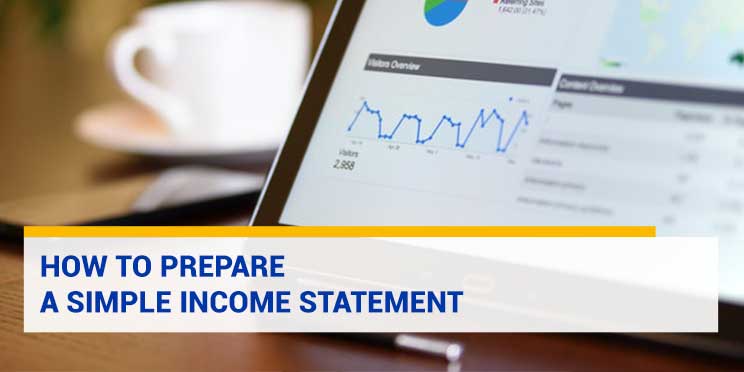The income statement is no longer an exotic concept in business; it is a need. This is because the report acts as a means of communication between the business and its owner.
In certain circumstances and concisely, the report is also required for business development. For instance, when it comes to attracting investors, financial statements are critical components that must be given.
The income statement’s significance and purpose

As for what the income statement is, it is the section of the financial statements that describes a business’s financial status. Reporting is not always consistent, as it is determined by each company’s policies.
Also read: Definition of Financial Statements, along with the Types and Benefits!
Typically, businesses prepare financial statements on a monthly or annual basis. The calculation should not be made randomly, as the income statement’s purpose is to:
- Acquaintance with Business Development
The financial accounts enable the business to determine the extent to which the business is growing. Is it consistent with the plan or is it out of step? - As a Step in the Decision-Making Process
If an error occurs or a loss occurs, the business can quickly devise appropriate resolution actions. The goal is that this problem will be resolved quickly and without delay. - As Evaluation Material
The income statement summarizes the financial activities of a business over a certain time period. When a financial post is ineffective, the business can conduct a more thorough evaluation. - As a Reflection of the Business
It’s not easy to find and deal with an investor. At the absolute least, the corporation must be able to persuade potential investors that the business is financially viable and lucrative.
The following are the six components of an income statement
As previously stated, financial statements comprise all information pertaining to cash flow. This means that the income statement must include the following:
- Revenue or Sales
Sales are the revenues or receipts generated by the process of supplying goods or services to purchasers, tenants, or service users. This sales component is the primary source of revenue for the business. - COGS, or Cost of Goods Sold
Simply said, the cost of goods is the sum of all expenditures associated with the manufacturing process of a product. These expenses include wages for labor, equipment, and spare parts, among others. - The responsibilities
Expenses are any costs incurred to advance the company’s interests. There are numerous sorts of expenses that must be recorded on the revenue statement, including the following:- Actual expenses: expenses that the business must incur during a specified time period.
- Selling expenses include all costs related with the sale of goods.
- Depreciation expense: an expense incurred as a result of an asset’s depreciation, such as a vehicle.
- Administrative and general expenses: expenses incurred to support office activities and requirements
- Deferred expenses are those incurred by a business to pay for products or services that have been delayed. In other words, the business was unable to make use of the goods or services.
- Non-performing loan expenditure consists of the loss incurred as a result of unpaid receivables. For instance, there are those who owe money yet are hesitant to repay it.
- Other expenses: those that have nothing to do with the manufacturing process or the above-mentioned sorts of expenses.
- Other Sources of Income
Other revenue is revenue that is not generated by the sale of the primary product. Profits from the sale of discarded sacks or cardboard packaging for raw goods, flowers, or dividend income, for example. - Profitable or Profitable
Profit is defined on a trading company’s income statement as the growth in equity or net assets as a result of economic activities. These gains are incidental, which means they are not generated by the company’s primary transactions. - Perish or Perish
Loss or loss is inversely related to profit; it represents a decline in the value of a company’s stock. They are, however, incidental or coincidental.
Also read: Understanding Complete Accounting Objectives, Benefits, and Functions
Creating a Simple Income Statement

Even if the business remains tiny, it is still required to provide an income statement. It does not have to be as comprehensive as large corporations; you can create a simplified version. The technique:
1. Establish a Reporting Period
Companies typically create financial reports on a monthly, quarterly, or annual basis. However, for a small business, rigorous structure is not necessary.
However, attempt to maintain an annual revenue statement in order to track the business’s progress. Thus, you can plan your subsequent marketing strategy.
2. Maintain Transaction Journals
A transaction log is a report that details all financial transactions within a business, including revenue, expense, and derivative costs.
3. Record in the Ledger
The general ledger serves as a source of data for compiling income statements at the conclusion of each period. This is due to the fact that the general ledger is connected with the other reports.
This manner, you may examine each sort of transaction in greater depth over a specified time period. Ascertain that no transaction is missing.
4. Construct a Trial Balance
The general ledger is distinct from a trial balance in that it records transactions in detail. This is because this balance only shows the entire balance of each account that has been compiled in a systematic manner. It serves the following purposes:
- Logging function: a place to keep track of all data associated with each account.
- Correction function: a location where all records in an accounting cycle can be corrected.
- As a means of monitoring each account in the financial statements.
- Preparatory function: as a preliminary stage in preparing the financial accounts of the business.
5. Create a format for the profit and loss statement
After completing all journals and records, the next stage is to compile financial reports to determine the company’s profit or loss.
Three major components comprise the format: total income, total costs, and a profit and loss column. The third column represents the difference between revenue and expense.
If income exceeds total expenses, the business makes a profit. In the reverse, when the load is increased, losses occur.
Earnings in Different Forms on Financial Statements
There are various sorts of earnings that appear on the income statement of large companies. This difference attempts to simplify the monitoring of reports for businesses. Profits come in the following forms:
- Gross profit, defined as total sales minus cost of goods sold
- Operating profit, which is defined as gross profit minus general, selling, and administrative expenses.
- Pre-tax profit, defined as operational profit less interest on loans or capital debt
- Net profit, which is defined as profit before taxes minus income taxes
Financial statements are undoubtedly increasingly sophisticated and detailed in their preparation. This is because the corporation has a large number of assets and conducts a large number of transactions.
As a result, a substantial number of businesses prefer to utilize our services. With the assistance of professionals and subject-matter experts, you may conduct a full consultation.
The Closing
Sterling Team Additionally, offers a variety of services and systems designed to streamline the process of creating financial reports, resulting in increased value.
One of them, specifically via SAP Business One. This financial management and other related programs are ideal for those of you who are beginning a business. Profit and loss statements are now as simple as the snap of a finger, thanks to technological advancements.


